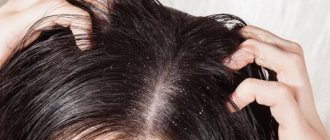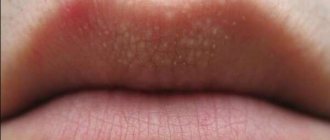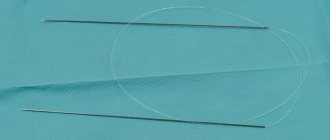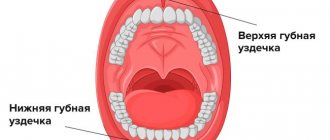V-Line surgery – to make your face oval!
A massive, wide, heavy jaw looks impressive in men, but does not adorn women. An elongated, angular or square lower part of the face does not correspond to the generally accepted canons of femininity, according to which facial features should be graceful and chiseled.
On the contrary, triangular, oval and intermediate V-shaped face shapes (oval in the form of a “heart”) have been considered a sign of aristocratic origin for centuries. The V-line of the jaw gives a soft, youthful charm to the features, since anatomically the lower third of a child's face is triangular in shape, which is the structure we associate with youth.
Types of jaw resection
In medical practice, there are 2 types of such operations:
- full,
- partial.
The first form of surgical intervention is performed with disarticulation (separation of the lower movable bone of the skull along the line of the joint space without filing the bone) when diagnosing sarcoma or cancer.
The second type is divided into the following types:
- resection, which breaks the continuity of the bone,
- resection without breaking bone continuity,
- partial excision with disarticulation,
- removal of soft tissue.
Both types of resection are performed with or without separation of the bones in the temporomandibular joint. The operation, which is not accompanied by disarticulation, is carried out on the following areas of the movable bone of the skull:
- chin area,
- the whole body or its individual segment,
- branch (partially) in conjunction with the body.
Isolation is necessary when removing a branch, condylar process, as well as partial excision of the body along with the process.
In the second type, the following areas are removed:
- plate, which is part of a compact substance,
- alveolar branch,
- coronoid process,
- lower edge of the body or angle of the jaw,
- edge of the branch.
The doctor prescribes the type of surgical intervention based on the size of the tumor, its location and ability to affect nearby tissues and organs.
Ideal proportions of the lower third of the face
The lower jaw consists of a horseshoe-shaped body and ascending branches, which are directed towards the temples and are located at an angle to the body of the jaw. If this angle exceeds 125°, the lower third of the face has an oval or triangular shape; with a less flat angle, the jaw looks square or round. The angle of the lower jaw is not only an anatomical, but also an age-related feature: in young children it is 150-160°, and the figure decreases with age.
The ideal proportions of the lower part of the face were calculated back in the Renaissance: a horizontal line is drawn from the middle of the interval between the lips and chin; when it intersects with the ascending branch of the lower jaw, it should form an angle of 100-110°. Such proportions create a “v-line”, that is, when viewed from the front, the line of the lower jaw resembles the Latin letter “V”.
Indications for surgery
The lower jaw is subjected to resection when diagnosing pathologies:
Malignant neoplasm:
- sarcoma,
- cancer.
A benign tumor that covers a large area of the jaw:
- fibroma,
- myxoma,
- chondroma,
- formation of granulomas in bone tissue, which contain a huge number of eosinophilic leukocytes,
- osteoblastoclastoma. Resection is used in the stage of disease recurrence,
- old dislocation of the jaw,
- hemangioma.
- osteomyelitis resulting from trauma.
Protruding corners of the lower part of the facial skull. People's conscious agreement to undergo surgery is associated with the desire to look attractive.
Treatment of such pathologies by resection is more effective than using curettage of the affected part. This is due to the fact that the second operation is possible only with free access to the tumor.
Reshaping the lower jaw with V-Line surgery
The possibilities of modern surgery make it possible to change the shape of the lower third of the face and bring it closer to the desired oval or triangle.
Depending on the initial shape of the lower jaw, V-Line plastic surgery (Jaw Reduction, V-Line Mandibular Contouring) may include:
- changing the contour of the lower jaw by resection of the corners
- straightening the edge of the jaw body using grinding
- narrowing of the chin using T-osteotomy (excision of a small section of bone tissue in the center or pushing it down and forward)
Mandibuloplasty is performed under general anesthesia and lasts an average of 1.5 hours. In the vast majority of cases, intraoral access is used in the retromolar region (behind the last teeth) and along the lower arch of the vestibule of the oral cavity (under the lower front teeth), which does not leave marks on the face. The period of postoperative hospital stay is 1 night.
The active rehabilitation period lasts 10-14 days: during this period it is necessary to use a face mask, there are some restrictions on food. The face recovers completely after surgery within 2 months.
V-Line bone grafting does not disrupt the structure of the dentition and is easily tolerated. The operation is indicated for patients aged 20-25 years with fully formed bone tissue.
Indications and contraindications
The main reasons for surgery are malignant, less often benign, formations. The prerequisites for resection of the lower jaw include the following diagnoses:
- Malignant tumors. The most common are cancer and sarcoma, and the course of these diseases occurs in different ways. New growths occur in areas of the molars and require resection.
- Ameloblastoma. The formation appears in middle-aged people and in 80% of cases is localized on the lower jaw. The peculiarity of the operation for such tumors is that plastic restoration of the face is easier. The neoplasm is characterized by its cystic form: groups of small hollow elements are filled with yellow purulent fluid. Over the course of several years, the patient has experienced a gradual deformation of the jaw, which does not cause discomfort. In this case, it is necessary to carry out resection for extensive lesions, since the curettage method has not shown effectiveness over the years of medical practice.
- Osteomyelitis. A purulent process develops in the problem area, so you should consult a doctor immediately. Most cases are characterized by conservative treatment, however, in advanced stages, surgeons resort to bone resection.
- Neoplasms of the lower lips and oral mucosa are benign in nature. Here, segmental resection is performed, and the doctor works on areas with soft tissues, while the jaw is not completely affected.
The main contraindications are chronic diseases of the heart and vascular system, acute lesions of the oral cavity and teeth, as well as the individual characteristics of the patient, which are identified by the surgeon. Resection is the most effective method for removing malignant diseases, so it should be considered as a necessary option in the absence of similar treatment methods.
Best results with 3D planning
The V-Line operation is designed to create a feminine and aristocratic oval face, an elegant small chin, and a more youthful appearance by changing the jaw line.
The VIP Studio virtual plastic laboratory makes it possible to 3D model the ideal proportions and desired shapes before surgery. Based on computed tomography and light scanning data, an accurate three-dimensional model of the face, head and neck is formed. The surgeon and the patient jointly plan the scope of the intervention; based on the model, calculations are made that are used during the operation.
Thanks to the VIP Studio virtual plastic technology, which Dr. Guryanov uses in his work, the result of the operation is as close as possible to the client’s expectations.
Types of pain relief
Due to the possible high morbidity, it is recommended to perform this operation under general endotracheal anesthesia.
It involves the introduction of several drugs with muscle relaxants into the trachea through a tube. At the same time, the patient's skeletal muscle tone decreases, which facilitates resection.
Do you feel nervous before visiting the dentist?YesNo
Advantages of anesthesia:
- the amount of administered drug required to turn off a person’s consciousness is reduced,
- the body is subject to less toxic effects from drugs and the functions of its vital systems are preserved.
Procedure steps:
- regular anesthesia is given intravenously so that the person passes out and undergoes tracheal intubation,
- endotracheal anesthesia drugs are administered,
- At the end of the operation, the doctor stops administering drugs and relaxants.
In some cases I use conduction anesthesia together with infiltration anesthesia.
First, the anesthetic is injected into the paraneural space, providing a blockade of the nerve trunks. Then local anesthesia is performed using a syringe.
Progress
Manipulation to correct the corners of the jaw takes place in several successive stages. First, the patient is photographed from several angles - profile, front and general plan. This is necessary in order to later compare the obtained result with the initial one.
Next, the surface of the face is cleaned of remnants of decorative cosmetics, sweat, dirt and dust particles using a special antiseptic solution. In this case, the product should not contain alcohol.
After cleansing, compresses with an anesthetic are applied to the skin. Despite the fact that the technique itself is painless, in the area of the lower jaw the epidermis is more sensitive to various types of influences. Novocaine or Lidocaine can be used as an anesthetic.
On this topic
- Contour plastic
Forehead contouring
- Olga Aleksandrovna Kalinina
- October 18, 2020
After the anesthetic takes effect, the doctor proceeds directly to injecting the filler at intervals of 0.5-1 millimeter. To do this, he uses a thin needle. It must be remembered that 0.3 milliliters of filler should be injected per puncture. On average, to completely correct the lower jaw, you will need up to 4 milliliters of product.
At the final stage, a mask is applied to the face with a cooling and soothing effect. The doctor can also perform a light manual massage, which will allow the filler to be evenly distributed in the layers of the dermis.
Non-surgical correction of the angles of the lower jaw with fillers
Is it possible to increase the angles of the lower jaw without surgery?
If the bone deficiency is minor, we suggest trying fillers in the lower jaw. Temporary increase in the angles of the lower jaw with filler.
Performed: upper blepharoplasty, ️installation of a chin implant, medial and lateral platysmaplasty with neck lift through an incision in the earlobes. Performed by a surgeon - Maxim Vasiliev .
At Platinental we use Voluma, Radiess or Juvederm fillers for this purpose - they are quite dense, safe and create the desired contour for a long time.
The main disadvantage of increasing the angles of the lower jaw with fillers is that the effect is temporary: the gel is completely absorbed, and after two years the fillers will need to be reinjected.
However, this procedure can be considered a rehearsal. If you like the result, it makes sense to consider permanent correction of the angles of the lower jaw with implants.
Complications
Like any cosmetic procedure, contouring with fillers does not completely eliminate the occurrence of various side effects. After the procedure, almost every person may experience hematomas, redness, a feeling of itching and tightness, as well as swelling. Such conditions are considered normal and go away on their own after 2-3 days.
More serious complications include the formation of extensive hematomas, increased body temperature, the formation of compactions, suppuration, or the release of serous contents from puncture sites. The reason for such phenomena is often the doctor’s failure to follow the injection technique or the patient’s ignoring all instructions during the rehabilitation period.
Drugs
To perform jaw contouring, specialists use fillers from various manufacturers. The most common drugs include the following.
Restylane
The basis of the substance is hyaluronic acid, which has a viscous structure. The result lasts up to 5 months, after which repeated manipulation is required.
Haequeo
This is a relatively new product in the field of cosmetology. Its main difference from analogues is its uniform distribution and the absence of complications during the recovery period.
Surgiderm
The most popular drug. After its introduction, no tubercles remain under the skin. The resulting effect will last for six months.
Juvederm Ultra
This is the only filler for lower jaw correction that contains an anesthetic substance. This makes it possible to perform the procedure as comfortably as possible for the patient.
Radiesse
One of the most powerful drugs in its action. After its use, it is possible not only to obtain an expressive appearance, but also to smooth out small wrinkles. It is recommended to give injections again no earlier than after 24 months.
Jaw contouring with permanent implants
A much greater effect will be achieved by increasing the angles of the jaw using porous Medpor implants.
Expert comment:
“Medpor is a very dense porous biomaterial that has been known in plastic surgery for more than 30 years.
Medpor is ideally compatible with tissues and does not require special fixation to the bone. It grows with connective tissue and blood vessels and literally becomes “one” with its own bone tissue.”
Andrey Iskornev, plastic surgeon
We always start with careful planning of the operation. Our task is not just to build up the lower jaw, we look at the issue much more broadly and our goal is to create a beautiful, harmonious face. Enlarging your lower jaw should improve your appearance. Therefore, in addition to experience in plastic surgery, the doctor must have artistic taste and an analytical mind.
All jaw angle implants are always selected individually in accordance with the concept of appearance harmonization. In difficult cases, a stereolithographic model of the skull is performed to plan the operation and select implants.









